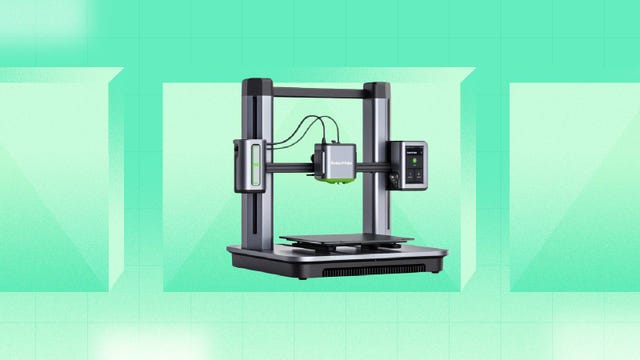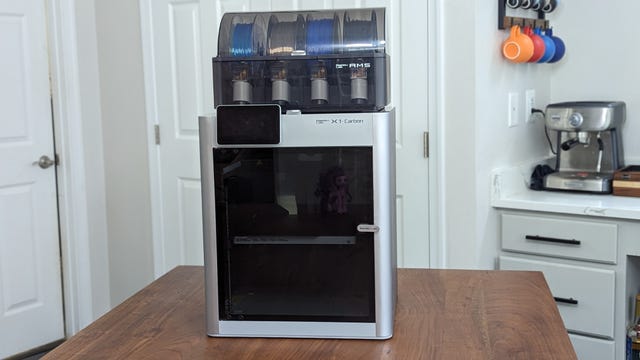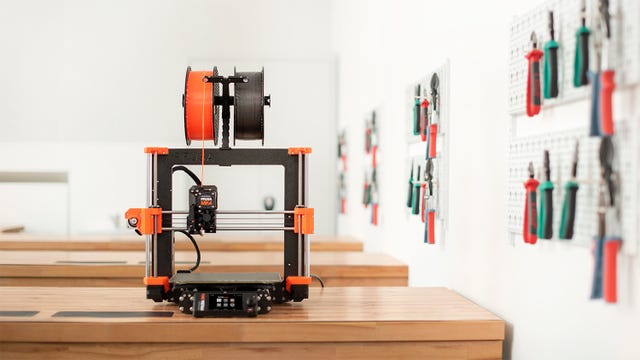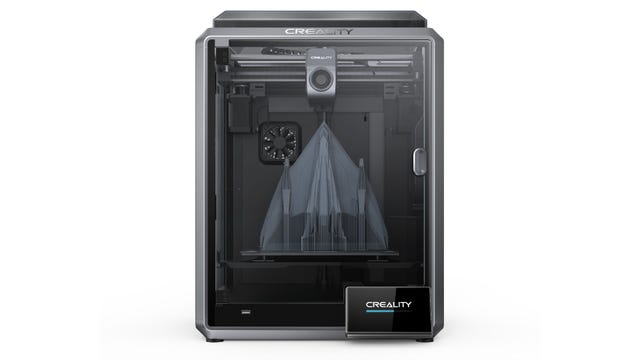In the age of 3D printing, quality has actually constantly been the most essential aspect. Attaining great quality prints constantly came at the cost of speed, however that was okay since a 14-hour print was still much better than the days it would take and the cost it would cost to get something made in a factory.
With the introduction of brand-new, quick 3D printers however, we can cut that 14-hour print time to 7 hours or less, conserving you money and time, and letting your innovative juices circulation at a much greater rate. If you currently own numerous of the existing finest 3D printers you might not wish to upgrade to a much faster printer right now, which’s okay. However, if you watch for a printer that provides outstanding quality and can blow you away with its speed, we have the products right here.
Quick 3D printers are still reasonably brand-new, so this list will upgrade regularly from here on out. Keep your eye out as we include brand-new printers when the screening is completed.
The P1P from Bambu Laboratory is presently among the absolute best 3D printers you can purchase. Priced at $700, it isn’t the most inexpensive printer, however it is extremely quick, and the print quality is regularly outstanding. While the P1P is bare-bones on the outdoors, it does feature a host of innovative functions like automobile bed leveling, filament runout sensing units and power-loss detection. It even has a video camera that develops time-lapse videos for social networks.
Due to the fact that Bambu Laboratory makes the P1P, it works with the business’s AMS, an additional gadget that lets you print in more than one color or product. The addition of the AMS makes the P1P practically as flexible as the X1 Carbon– Bambu’s flagship printer– at a substantial conserving.
Learn More: Bambu Laboratory X1 Carbon vs. Bambu Laboratory P1P
While I do want that the P1P had a much better LCD, and the SD card that includes it is shockingly sluggish (I suggest changing it right away), these negatives do not eclipse how outstanding this 3D printer is. I utilize my own every day and it’s remarkable.
Among the very first customer 3D printers to break the 250 millimeter-per-second speed barrier, the AnkerMake M5 has just recently had a software application upgrade to press its accelerate to 500mm/s on its ultrafast mode. The M5 utilizes an AI electronic camera to assist you find problems so you can stop a stopping working print prior to you squander a great deal of product. The AI is especially bad, however the electronic camera does offer you some wonderful time-lapse videos to share on social networks.
Learn More: AnkerMake M5 Evaluation
If you’re trying to find a quick printer that does not use up a great deal of space, this is an outstanding novice option, specifically as it’s the most inexpensive of our choice.
Of all the quick 3D printers I have actually checked, the X1 Carbon rules supreme. In every classification I check, it stands apart on top. The only thing that keeps it from being my leading choice is the expense. This academic package, while using a great deal of worth, is still $1,599, almost 3 times the cost of the AnkerMake M5.
The X1C is customized for unique products that need a solidified nozzle. Things like carbon fiber-infused products need a more powerful nozzle, or they will be used down really rapidly. When you pair that with the lidar bed leveling, AMS color system and an AI electronic camera to identify mistakes, you have a powerful maker.
Learn More: Bambu Laboratory X1 Carbon vs. Bambu Laboratory P1P
Quick 3D printers en route
While these printers seem in the very same ultrafast vein as the others, we have yet to entirely check them in the method we would desire. Due to the fact that of that, we are unable to suggest them completely, a minimum of till our complete screening is total.
Today, the Prusa MK4 is resting on my workbench, producing outstanding prints by the bucketful. I’m still not rather completed with the complete evaluation, however up until now, the MK4 is measuring up to Prusa’s outstanding track record. Nearly every element of the MK4 is an upgrade to the MK3S Plus, with a brand-new detachable nozzle setup, a brand-new extruder, and an automated z-height modification system that guarantees “best very first layers each time.”
Checking isn’t rather completed yet, however Prusa has a terrific performance history, so this isn’t most likely to be a bad maker.
Learn More: Prusa MK4 Follows Up Finest in business
The K1 and K1 Max are Creality’s brand-new flagship 3D printers. The business is appealing 600mm/s– the fastest speed from any printer up until now– at a cost that’s tough to think: $600 for the K1 and $999 for the K1 Max, a printer with a bigger develop volume, appears too great to be real.
We have not got among these in for screening yet– nobody has– however I’m thrilled to attempt it out and see how it compares to the more pricey competitors. What’s intriguing is the complete enclosure and lidar bed leveling that come as basic on the K1. That’s something you would just generally discover on a a lot more pricey maker.
Learn More: Creality K1 Is Its Response to Bambu and Prusa
How we test
Checking 3D printers is a thorough procedure. Printers frequently do not utilize the very same products, and even the very same procedure to produce designs. I check shanty town, 3D printers that utilize resin and light to print, and FDM, printers that melt plastic onto a plate. Each has a special approach. Core qualifiers I take a look at consist of:
- Hardware quality
- Ease of setup
- Bundled software application
- Look and precision of prints
- Repairability
- Business and neighborhood assistance
An essential test print, representing the (now old) CNET logo design, is utilized to evaluate how a printer bridges spaces, develops precise shapes and handle overhangs. It even has little towers to assist determine how well the 3D printer handle temperature level varieties.
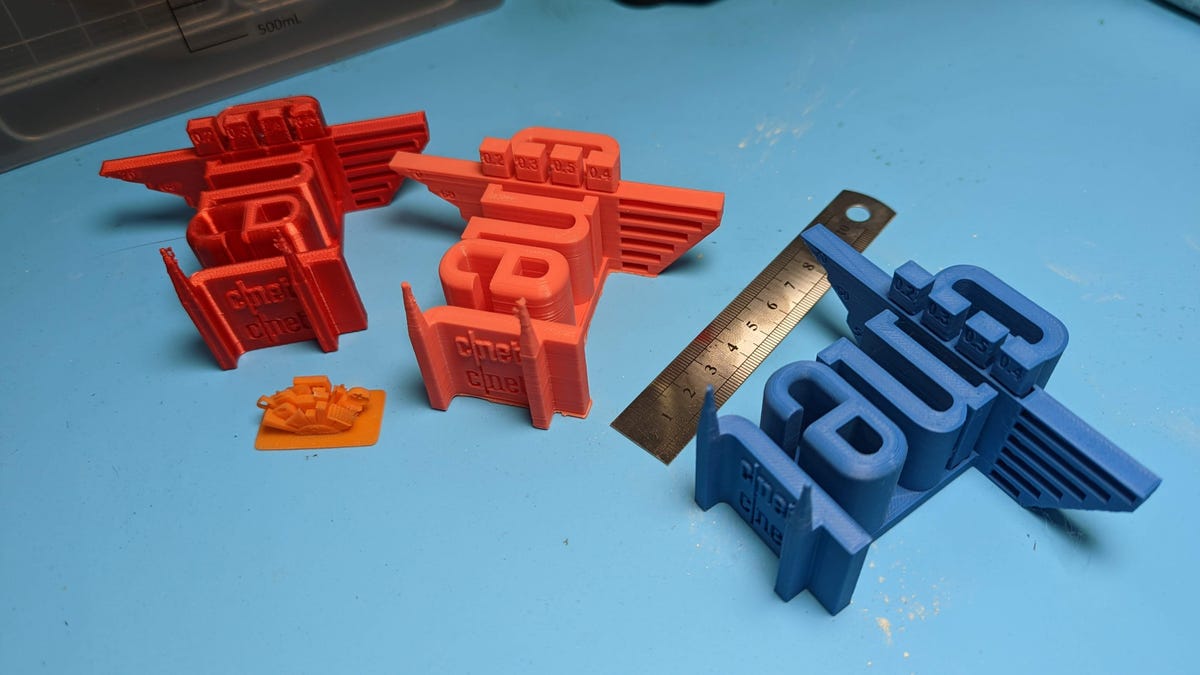

When evaluating speed we slice the design utilizing the basic slicer the maker is delivered with on its basic settings then compare the real-world period of the print to the declaration conclusion time on the slicer. 3D printers frequently utilize various slicers, and those slicers can differ hugely on what they think the conclusion time to be.
We then utilize PrusaSlicer to identify just how much product the print ought to utilize and divide that number by the real-world time it required to print to offer us a more precise number for the speed in millimeters per 2nd (mm/s) the printer can perform at.
Numerous other anecdotal test prints, utilizing various 3D designs, are likewise worked on each printer to check the durability of the parts and how well the maker deals with numerous shapes.
For the other requirements, I look into the business to see how well it reacts to support inquiries from clients and how simple it is to buy replacement parts and install them yourself. Printers that come just semiassembled as sets are evaluated by for how long, and how challenging, the assembly procedure is.
